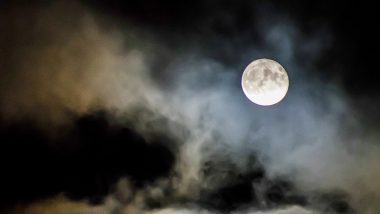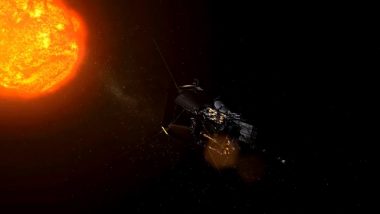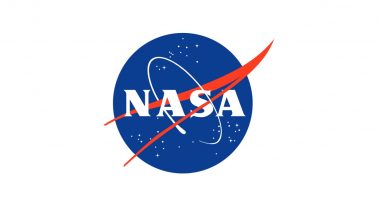The Moon shines and makes our world bright. It has beauty and elegance and a pleasure to watch in the sky. With the beginning of the year, space enthusiasts might eagerly wait for the upcoming lunar events; there is something more special the National Aeronautics and Space Administration (NASA) has in store for us. Well, you can now get a sneak peek to how the Moon will appear throughout 2021. Yes, you read that right. Thanks to amazing technologies and increased curiousness among space lovers, NASA had shared high-resolution version with feature labels and additional graphics representing how the Moon will look in the sky this calendar year. Where and how can you get a sneak peek of the moon phases and libration? In this article, we will bring you all the details. Four Eclipses in 2021, Two to Be Visible in India.
The animation archived on NASA’s page shows the geocentric phase, libration, position angle of the axis, and apparent diameter of the Moon throughout the year, at hourly intervals. Until the end of this year, the initial ‘Dial-A-Moon’ as they describe the image will be the animation frame for the current hour. “Who shines bright and always has your back at night? Full Moon with face This beauty, that’s who. Pick a date and get a sneak peek at how the Moon will look in the sky throughout 2021” NASA tweeted. Cold Moon 2020: Stunning Pics of The Final Full Moon of the Decade Mark End of the Year Blissfully.
Here's the Tweet:
Who shines bright and always has your back at night?
🌝 This beauty, that’s who.
Pick a date and get a sneak peek at how the Moon will look in the sky throughout 2021: https://t.co/RZvYzVQsxJ pic.twitter.com/m0LSL8yjfl
— NASA (@NASA) January 1, 2021
The Moon always appear to keep the same face to us, but it is not exactly the same face, as explained by scientists. “Because of the tilt and shape of its orbit, we see the Moon from slightly different angles over the course of a month,” explained NASA. When the month is compressed into 24 seconds, our changing view of the Moon makes it look like it is wobbling, the wobble is called libration, the space agency explained further. The most noticed monthly variation in the Moon’s appearance is the cycle of the phases, which is caused by the changing angle of the Sun as the moon orbits the planet Earth.
“By first quarter, the Moon is high in the sky at sunset and sets around midnight. The full Moon rises at sunset and is high in the sky at midnight. The third quarter Moon is often surprisingly conspicuous in the daylit western sky long after sunrise,” NASA added. The descriptions on how the Moon will appear corresponds to the viewing from the northern hemisphere. Click HERE to know how the Moon will appear as per month, time and dates.
Isn’t it interesting? NASA often shares different and significant knowledge of astronomy events. The US space agency never fails to captivate enthusiasts with so many fascinating facts about the solar system that we may not have known.
(The above story first appeared on LatestLY on Jan 02, 2021 03:32 PM IST. For more news and updates on politics, world, sports, entertainment and lifestyle, log on to our website latestly.com).













 Quickly
Quickly






















